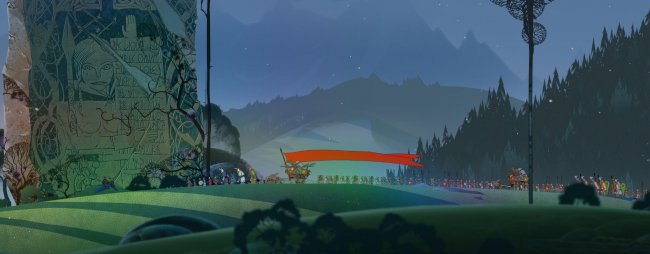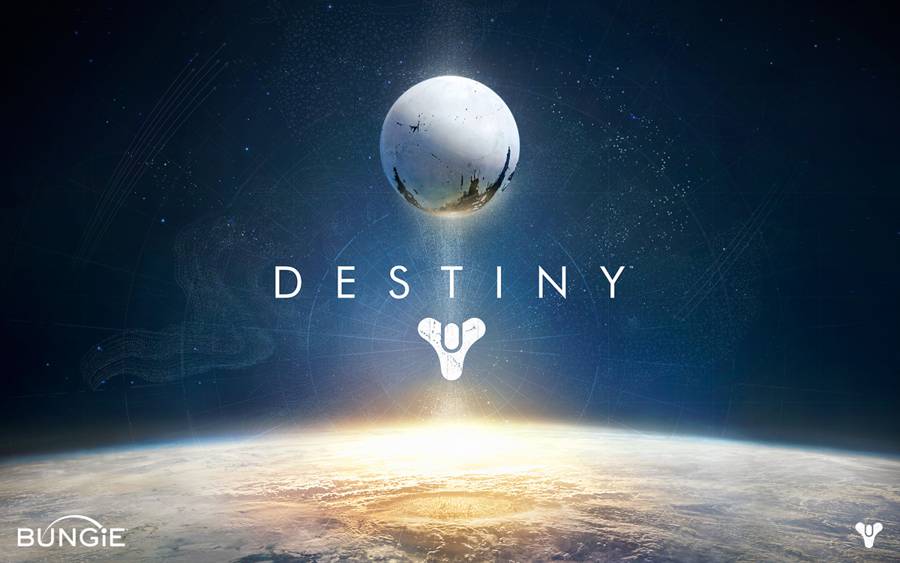

Two years ago the three founding members of Stoic - Alex Thomas, Arnie Jorgensen and John Watson - left the safety and security of BioWare to strike out on their own, with the intention of creating the game they'd always wanted to make.
Thanks to a successful Kickstarter campaign and a groundswell of support towards their project, they were able to realise their vision, and The Banner Saga represents the fruits of their collective labour. It's an elegant game, full of weighty decisions and subtle dialogue, wrapped up with wonderful visuals and a nuanced turn-based combat system (if you haven't guessed, we liked it - check out our review for more details).
Following the game's release earlier this week, we caught up with one third of the Stoic team, Alex Thomas, and found out more about the creation of the game, the ideas and influences that shaped it, and what the studio is planning in the future.
Most people's first impressions of The Banner Saga are going to be the striking visual style, so let's start there. We asked what were the main inspirations that led them to use that art style. "Depending on where this question comes from," Thomas starts, "we've heard all kinds of responses: Don Bluth, Ralph Bakshi, classical Russian painters. The truth is, it's almost entirely inspired by the work of Eyvind Earle, an American master painter who was also the art director on Disney's Sleeping Beauty. If you look at Earle's personal works you'll notice the similarities, and you'll start to notice it in a few other games as well. Super Brothers Sword and Sworcery have definitely drawn inspiration from it for their own pixel art, for example, and that's a game that largely inspired us to strike out on our own as well."
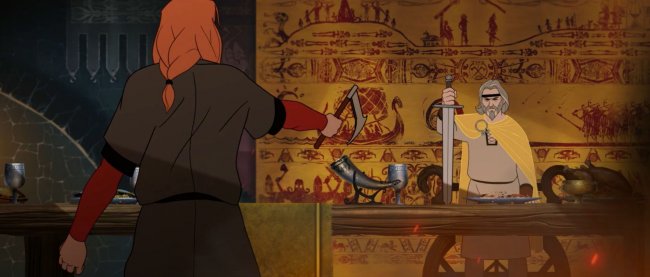

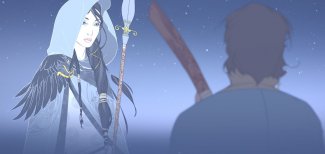
The game switches between character portraits, rolling landscapes, and turn-based battles. "Everything was difficult and time-consuming. We got really ambitious and constantly challenged ourselves," Thomas said regarding the creation of art. "We had one artist (Arnie Jorgensen, one of the Stoic's founders) doing virtually every piece of non-animated art. As for the animations, those had their own unusual process: we would essentially act out all the animations on our front lawn and film it from a ladder, then break out the frames and send them over to a local animation studio called Powerhouse Animation, who have a lot more people on hand to produce the final animated product."
One of the things that we really loved about The Banner Saga, but that perhaps isn't immediately obvious, is the design of the map. We asked how it was put together. "We spent a lot more time on it than I think any of us intended, largely because we just enjoyed it so much," Thomas told us.
"It went through a lot of iterations visually to make sure that it worked within the context of the story. We shuffled locations and landmarks around constantly until the distances felt right, since distance is a very important part of the game itself. After that we went through a pretty exhaustive process working with a native Scandinavian to make sure the names we were putting down weren't complete nonsense. People who know the language get a little bonus there."
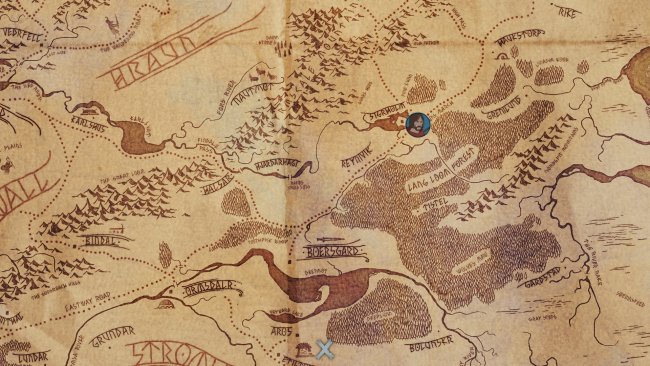
He continued: "Lastly, we decided rather late in production to be able to hover over and learn more about any location in the world, whether it's important to the story or not. We were really crunching near the end of production and I spent a solid 15 hours straight writing these descriptions. By the end it was getting tricky to come up with new ways to describe ice and forests. You'll definitely be visiting a lot more of these locations in the future installments."
The influence of Norse mythology can be felt throughout the game, not just in the map. We wanted to know whether this was a starting point for the studio, or whether it was something that they ended up with. "That was a really solid foundation for us. The best thing about norse mythology is that so much of it is really compelling and untapped. How many times do we hear the same viking myths about hammers and lightning but nobody mentions the norn: three wise women who live outside of time and weave the fate of each person with different yarn, or Ratatosk, the squirrel who runs up and down the world tree taunting the sleeping dragon who sleeps in the roots. That's the interesting and creative stuff."
"Our design for everything in this game was very much focused on taking the fantasy genre in an unusual direction," he continued. "We were so tired of orcs and goblins and dwarves. Norse mythology was really a great starting point for us because they have such a weird, unexplored mythology. Everyone focuses on Thor and Odin when the really interesting stuff is, for example, the sun being eaten by giant wolves and pulling a serpent the length of the world out of the ocean with a fishhook."
Equally interesting was the dredge, the silent enemy that stalks the player throughout the campaign. The Stoic man explained the motivations behind their design, and divulged some of their inspirations. "The dredge are not unlike the norse dvergr who could craft magical objects and were essentially made from stone. Instead of being small, we wanted these really imposing, quiet giants who aren't vicious and bloodthirsty. Not entirely unlike the creatures from Shadow of the Colossus, you don't exactly know what they are or what their motivation is."
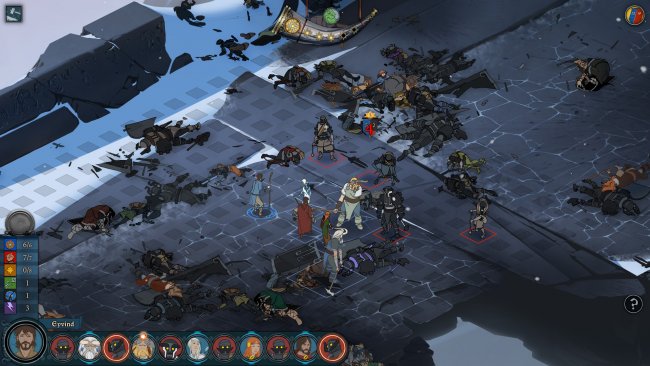
Moving away from art and design, we asked if there were any features that were cut from the final game. To our surprise it turned out to be the opposite: "Believe it or not, we cut almost nothing from this game. If anything we added more content than we ever expected. This was largely due to the funding we got from Kickstarter, and the decision to take as long we needed despite burning our personal life savings in the process. If there is anything I wish we could have gotten in, it's a little bit of motion in some of the cutscenes. Animation is an expensive and time-consuming process. In a perfect world we could have done voice-acting for each character, but this would have been such a massive and expensive undertaking for the amount of dialogue in The Banner Saga that it's far beyond the scope of our game."
Kickstarter brought the game to prominence, and allowed the studio time to really polish the final product before its release. We wanted to know what it was like asking the crowd for funds, and how that changed the direction of the project.
"We really saw all of the good and the bad in equal measure, I think. The biggest problem is that everyone was so starry-eyed that they didn't know what to make of things like delays and iteration, and anything that they had a personal investment in. This included us. It would take a while for Kickstarter to mature and the people using it to become more familiar with what to expect. We faced a lot of opposition on certain things, but stuck to our guns and I think delivered the best thing we could, which deep down I know is what people wanted. It was a difficult and sometimes terrifying road, though."
Factions, the player versus player component of The Banner Saga that was released as a free-to-play title last year, was focused on combat between human players. Thomas revealed what was it like taking one of those players out of the equation, and how they balanced the AI for the single player experience. "The most important thing Factions did for us was help to identify the places that combat needed an overhaul. For example, we added a system called "Pillage mode" which kicks in when you've got the enemy down to one person standing. For a variety of reasons this was essential to balancing combat and added an interesting layer of strategy, too. There were many big revisions like this and hundreds of smaller tweaks we were able to make because we had so many people playtesting the game and giving us feedback."
He then continued: "As for the AI, our technical director, John Watson, was able to use the understanding of how people played to create a really believable deterministic approach to AI that can also scale to the difficulty. We've heard from some American players that it can be a little too unforgiving, and from many Europeans that it's wonderfully challenging."
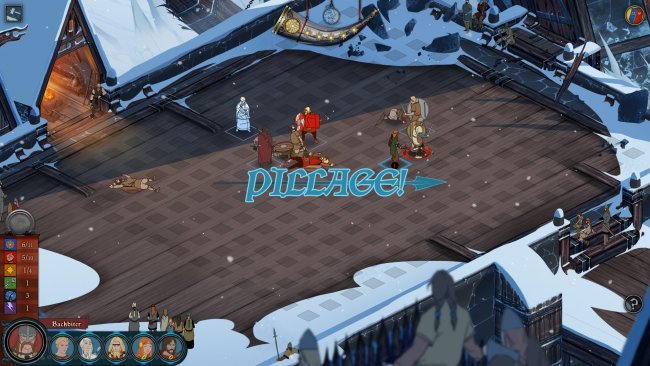
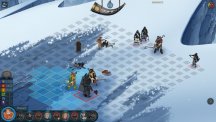
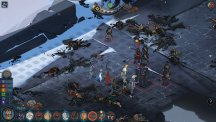
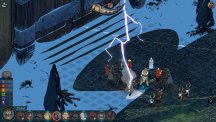
And what of the future of Factions? "We have a few stretch goals to fulfill, and we want to make Factions into more of a game and less of a demo. I think this will happen over time. It's nothing we feel like we need to have happen all at once."
One thing we haven't touched on yet is the game's soundtrack. Perhaps our only criticism of it was that there wasn't enough of it. Austin Wintory, the composer who worked on Journey and Monaco: What's Yours is Mine, provided the score, and the Stoic team very much enjoyed working with him. "When our Kickstarter campaign was in full swing, we contacted Austin almost on a whim. We didn't expect him to respond. We had all recently played Journey and were so blown away by the musical score that Austin was our first choice for a composer. To our surprise he contacted us within the same day, we had a loooong talk on the phone and by the end of the week we had a working contract with him. The whole experience has been incredible, and he's had as much input on the direction of the game as anyone. We've been calling him an honorary member of Stoic."
It's common knowledge that the team worked together at BioWare before breaking out on their own. We asked about the circumstances that brought Stoic together as a studio?
"With Star Wars: the Old Republic winding down, we were feeling pretty good about our roles on that project but also that it was time to do something of our own, or we never would. Arnie and I had previously worked on a small project called Dino Boy, which was a children's book on iOS, and had aspirations to do something on a grander scale. John joined us on the tech side of things. We started Stoic early in the year and within a few weeks we had some gold standard gameplay mocked up and felt pretty good about the direction we were going."
We then asked whether Thomas missed working in the studio environment. "I had no reservations about the experience I had working for a large company. The amount that I learned there is immeasurable, and the greatest advantage was always that you were surrounded by experts in every field. Anything you wanted to know about making games and the tools to do it are at your fingertips. Ultimately though it was a question of working for yourself and using those skills you've learned to make the game you grew up wanting to make. Our strongest advantage as a small studio is the opposite of working in a corporate environment: we're agile, we can make decisions quickly and change course instantly if we need to."
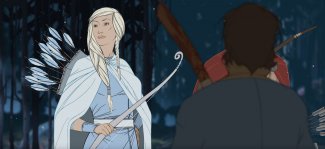
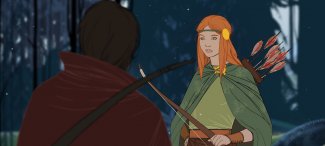
That agility isn't something that they want to lose, and retaining it is important, even if that means some design decisions remain off-limits to them as a result. We were curious to know whether they'd consider doing a fully-voiced sequel, or if they'd stick to the text-based format that's served them so well so far: "It will really depend. It's not just the financial cost of voice acting that we're considering, it's the fact that it affects the production cycle. One of our biggest advantages is being able to make changes at a moment's notice and refine things constantly, and up until the last minute. Coming from BioWare, we know how much voice acting locks you down: you can't change a conversation that is already recorded. And aside from the cost, the amount of time implementing a system like that takes is certainly not insignificant."
One thing that will carry over to the next game is the choices that are made in the first chapter: "Player choice was a big deal throughout all of the first game, and we had a lot of things happen that will definitely carry over into the sequels; some things obvious and others not. The story of men and varl continues where it left off in the first game."
Now that the crunch is over and the game's out in the wild, Thomas revealed the studio's plans in the short and longterm: "Our immediate plans is to take a break. By the end of production we were working 15 hour days, sometimes more, and we're exhausted. Since launch we've been reading all the reviews, the good and critical feedback, and working on a patch before we shut down the studio for a couple weeks. When we come back we'll be back on the Banner Saga. I already have ideas that I have to actively push away so I can try and relax for a minute. With the game's foundation in place we think everything will be a little easier this time."
"Our long-term plans are to keep supporting Factions and finish the trilogy. After that, who knows?"
The Banner Saga is out and available to download from Steam. If you're into either RPGs or turn-based strategy, we recommend you pick up a copy. Head this way to read our review.
